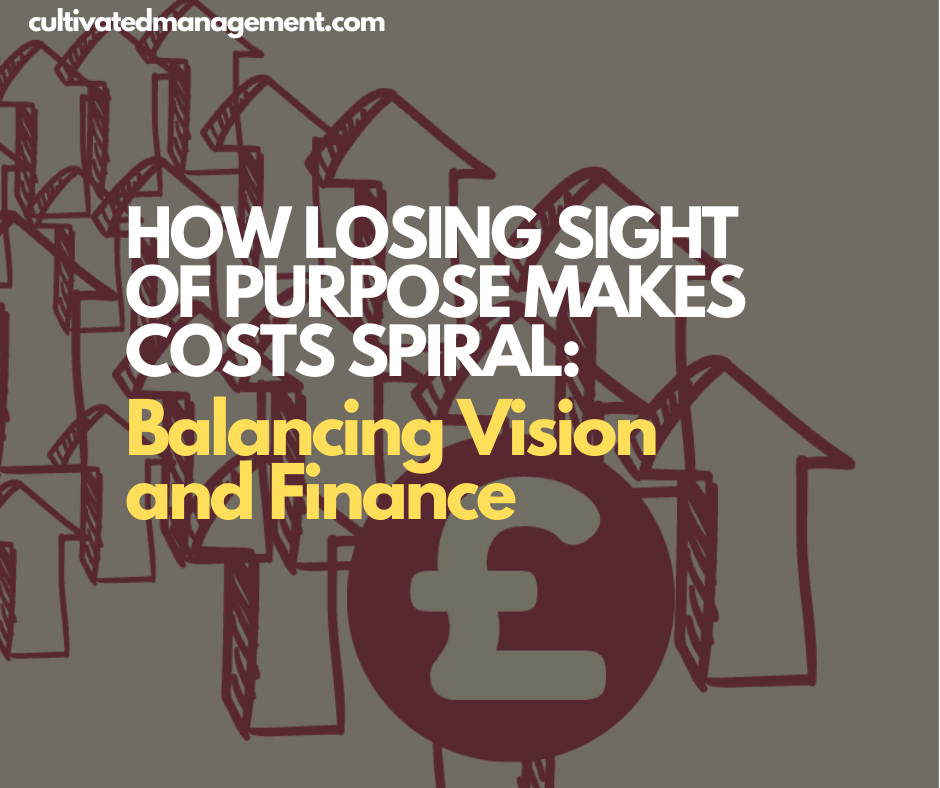
When Cutting Costs Destroys Purpose
Last week, my wife and I went out for a meal at our local pub. Normally, it’s a solid choice: decent food, fair prices, a relaxed setting, and good service. But this time, things were very different.
From the moment we arrived, it was clear they were managing costs at the expense of their purpose.
They’d closed off the main restaurant to save on heating, leaving only the bar area open. The options? A table by the toilets, a drafty spot by the front door, or a high bar table — not exactly the setting you want for an anniversary lunch.
When it came to ordering, things only got worse. The poor guy on the till was brand new, left completely on his own, and visibly overwhelmed. It took him 20 minutes just to put our order through, while the queue grew longer and longer. Meanwhile, staff were running around looking for firewood to heat the place, leaving no one available to support him.
Our food finally arrived — starters and mains all at once. My wife’s lasagna was burnt, though my fish and chips were thankfully excellent. Still, the whole experience felt rushed, chaotic, and cold — literally.
And here’s the real problem: the pub had lost sight of its purpose.
Why Purpose Matters More Than Cost-Cutting
Every business is under pressure right now: inflation, energy costs, post-pandemic fallout, and economic uncertainty. I don’t envy anyone running a hospitality business in the UK.
But when you cut costs without considering your purpose — the reason customers choose you in the first place — you risk losing both revenue and reputation.
The purpose of this pub, from our perspective, is simple: provide a warm, welcoming space with good food and friendly service. That’s what we’re paying for. Instead, we got cold seating, overwhelmed staff, burnt food, and long waits.
The result? We won’t go back. Other customers said the same. And a quick look at TripAdvisor showed a flood of bad reviews. Those reviews will now cost the pub even more — fewer customers, more marketing spend to win people back, and higher recruitment and training costs as staff churn.
By trying to save money, they actually increased costs in all the wrong places.
The Cost of Cutting Costs
I see this pattern everywhere:
- Cut heating → customers leave cold and unhappy → revenue drops.
- Cut training → staff struggle → mistakes increase, service suffers.
- Cut professional services → customers can’t onboard properly → support calls skyrocket.
- Cut recruitment standards → bad hires → managers spend more time firefighting.
Every short-term saving creates long-term costs somewhere else.
Purpose First, Costs Second
Contrast this with a friend of mine who runs a thriving bar. He knows his purpose: to create a buzzing, social space people want to return to. His bar is always full. He measures success against that purpose and makes cost decisions in line with it. In fact, he’s now opening a second location.
That’s the difference. When you know your purpose, you know what to measure, what to protect, and how to adapt. You can still experiment with efficiencies and savings — but always against the backdrop of purpose.
Because here’s the truth: when you manage costs at the expense of purpose, your costs always go up. Maybe not immediately, maybe not in the same place, but somewhere, the business will pay for it.
So before cutting, ask:
- Why do we exist for our customers?
- How do we measure if we’re living up to that?
- How will this cost-saving decision impact our purpose?
Get that right, and cost management becomes smart, strategic, and sustainable. Get it wrong, and you’ll end up like my local pub — saving pennies, but losing pounds, and serving burnt food.
